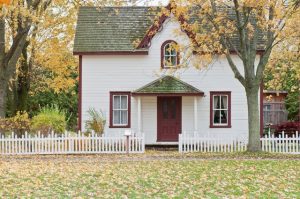With summer coming to an end, it’s time to look ahead to fall. Here are some tips & tricks to add to your fall checklist to help get yourself ready for the new season.
1) Clean and Store Boats
As the weather gets chilly, taking the boats out of the water, doing maintenance and weatherizing them is essential to keeping them protected. Another good step is to review your boat coverage with MCIA to ensure that your coverage is set while you winterize your boat for the season. Different storage options may require different coverage, so it is best practice to check on your policy.
2) Winterize Pools
Prepare your pool for colder weather by going through these steps before covering it.
A week before closing the pool, adjust and balance the water pH to these ranges: pH: 7.2-7.4, Alkalinity: 80-120 ppm, Calcium Hardness: 180-220 ppm.
Shock the pool with chlorine several days before covering. Remove skimmer baskets, wall fittings, cleaners, solar blankets and ladders from the pool. Skim, vacuum and brush the swimming pool. Lower the water level, drain all pool equipment, and winterize the plumbing to and from the pool. Then, cover the pool for the season.
Also, check your policy to ensure that your pool is covered for wintertime damage and hazards, as well as liability during the summer. MCIA can help you review your policy and pair you with the best carrier for your needs.
3) Clean out gutters and window well drains
If gutters are filled with leaves or other objects, water may back up and start pouring down rain pipes right next to your home. Depending on the water flow and where those pipes are, this can be a hazard for flooding in your home, especially in the basement.
You should also be sure to clear out leaves from window well drains so that water does not backup and eventually work its way into the basement windows. This type of insurance claim could be denied.
4) Get water away from the house
There are additional steps to take after cleaning your gutters. You may need to hire someone to dig trenches, and install or manage underground drain pipes to pull water away from your house. Make sure all landscaping is pitched away from your home.
5) Furnace
Check on your furnace before it gets too cold. Turn on your thermostat to get the heat flowing, change air filters, cover your AC condenser and clean the heat exchanger. Be sure that things are running properly and coordinate maintenance by hiring a license professional before it is cold enough to have an issue.
6) Seal up masonry
Repair any broken joints or cracks in walkways, steps and stonework. Make sure you have clear, shovel-friendly paths to all doors. If a third party will be taking care of your snow removal, be sure to obtain a certificate from them prior to their work.
7) Cut down on heating costs
Make your house more energy-efficient by adding insulation, caulking around windows and doors and new storm windows. Maybe you have enough sun and space for solar panels. Repair any cracked or broken windows.
8) Check carbon monoxide and fire detectors
Maintenance on your detectors is always a good practice, especially before entering the months where you are using the furnace, oven, and chimney often. These warmth sources can carry their own risks for fires or carbon monoxide, so test your alarms and check batteries at the start of the season.
9) If you have a fireplace:
Clean your chimney. Hire a chimney sweep to clean out your chimney before using it. How often do you need to sweep it? If you have about 50 fires during the winter, or about three per week, you should be sweeping it once a year.
Order firewood and store properly for wintertime use.
10) Review your Homeowners or Renters Insurance Policy
With the risks of winter weather approaching, knowing your policy well and how to use it is an important step of fall maintenance. Our team of experts can help you review your coverage, assess any of your changing needs, and ensure that you have the correct insurance provider and policy for your risks with an insurance specialist.

